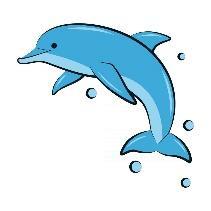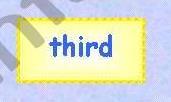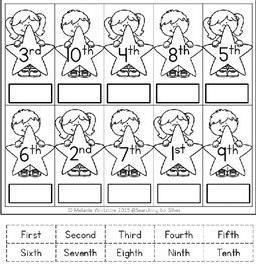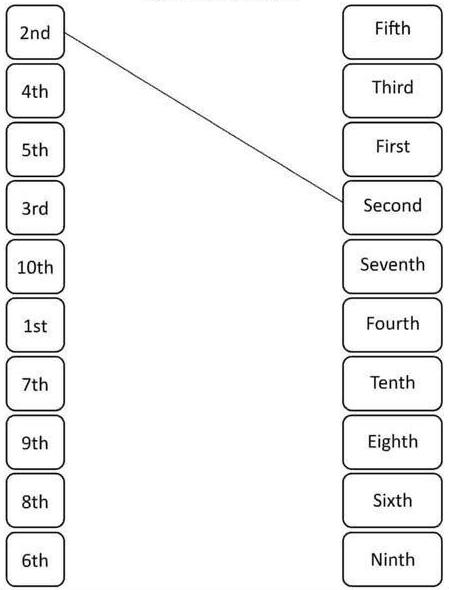
Subject:
Models and Practice for inclusion and diversity
Topic:
Strategies to improve English linguistic skills directed to students with special needs
Author:
Jael Guagua
Teacher:
Mgt. Marjorie Perlaza
Academic period April - August 2024

Mild Cognitive Disabilities
Autism Spectrum Disorder
Introduction
Autism Spectrum Disorder (ASD) is a neurodevelopmental condition characterized by differences in communication, social interaction, and behavior. In educational settings, students with ASD often require tailored support and accommodations to thrive. This can include specialized teaching strategies, sensory-friendly environments, and individualized education plans (IEPs) that address their unique strengths and challenges. Educators and support staff work collaboratively to create inclusive classrooms where students with ASD can engage meaningfully in learning experiences. By understanding and addressing the diverse needs of these students, schools aim to foster an environment that promotes academic success and personal growth for all learners.
People with ASD may have difficulties understanding social cues, maintaining eye contact, and forming relationships, while others may exhibit advanced skills in specific areas or intense focus on interests. The variability in symptoms and abilities means that no two individuals with ASD are exactly alike, making each case unique and requiring personalized approaches to support.
Origin
The origins of autism spectrum disorder (ASD) are not fully understood, but research suggests a combination of genetic and environmental factors play a role in its development. “Autism Spectrum Disorder (ASD) is classified as a neurodevelopmental disorder that begins to manifest from early childhood” (Botelho, 2024) Genetic studies have identified numerous genes associated with ASD, indicating a strong hereditary component. These genes are involved in brain development and function, particularly in areas related to social communication and behavior. While no single gene causes ASD, the interaction of multiple genetic factors may increase the likelihood of an individual developing the disorder. In addition to genetic influences, environmental factors are believed to contribute to the risk of ASD. These may include prenatal factors such as advanced parental age, exposure to certain medications or infections during pregnancy, and complications at birth.
Definition
Autism Spectrum Disorder (ASD) is a neurodevelopmental condition characterized by persistent challenges in social interaction, communication, and the presence of restricted, repetitive patterns of behavior, interests, or activities. The "spectrum" aspect of ASD reflects the wide range of symptoms, skills, and levels of impairment or disability that can occur. People with ASD may experience difficulties in understanding and expressing language, interpreting social cues, and forming relationships, but they can also exhibit unique strengths and talents, particularly in areas such as detail orientation, memory, or specific interests. “Among the challenges identified in the existing literature, 3 bear emphasizing. First, autism is a complex disorder, requiring the input of cross-disciplinary teams of educators and health care professionals, and of parents.” (Susan E

Bryson, 2003). The condition can vary significantly in severity, from highly functional individuals who require minimal support to those who need substantial assistance in daily life.
Characteristics
Social Interaction Difficulties: Individuals with ASD may have trouble understanding social cues, such as facial expressions, body language, and tone of voice. They might struggle with forming and maintaining relationships, engaging in reciprocal conversations, or empathizing with others. These challenges can lead to social isolation or difficulty in social settings.
Communication Challenges: Communication difficulties in ASD can range from a complete lack of verbal communication to difficulties in using and understanding language. Some individuals may have a limited vocabulary or struggle with pronoun use, while others might speak in a highly formal or monotone manner. Non-verbal communication, such as gestures or eye contact, may also be affected.
Cognitive and Learning Variations: Cognitive abilities in ASD can range from intellectual disability to above-average intelligence. Some individuals may have learning disabilities, while others may excel in specific areas like mathematics, music, or art. Executive functioning skills, such as planning and organizing, may also vary.
Levels
Mild: Students with mild ASD may require minimal support. They often have near-average to above-average intellectual abilities and can communicate verbally. These students may experience challenges with social interactions, understanding social norms, or adapting to new situations.
Moderate: Individuals at this level require more substantial support. They may have more noticeable difficulties with social communication and understanding non-verbal cues. Language development can be delayed or atypical, and students might use a limited vocabulary or struggle with pragmatic language skills.
Severe: Students with severe ASD require significant support. Communication challenges can be pronounced, with some students being non-verbal or having very limited speech. Social interactions are often highly impacted, and students may have little interest in engaging with peers. Repetitive behaviors and strong resistance to change are common.
Profound: Individuals with profound ASD have the most significant support needs. They may have little to no functional language and might rely on alternative communication methods, such as picture exchange systems or communication devices. Severe cognitive impairments and high levels of sensory sensitivity are common.
In conclusion, In the educational system, the level of ASD helps guide the development of Individualized Education Programs (IEPs) and the allocation of resources and support. Early intervention and continuous assessment are crucial in ensuring that students with ASD receive the appropriate accommodations and support to thrive academically and socially.

CARRERA DE PEDAGOGÍA DE LOS IDIOMAS NACIONALES Y EXTRANJEROS

DATE: July 31
LESSON N°:1
Grade: 5th Time: 2 periods
TEACHER: Jael Guagua
OBJECTIVE:
UNIT: 1
Topic: Prepositions of time
Students will be able to understand and correctly use prepositions of time (such as "at," "on," and "in")
INSTRUCTIONAL AIDS, MATERIALS, OR TOOLS NEEDED:
✓ Prepositions of time activity in the Worksheets
✓ Whiteboard and Markers with interactive activities “Preposition of time”
✓ Interactive game and quiz materials
ACTIVATION/ PRESENTATION
Activation Warm-Up:
LESSON OUTLINE:
• Start with a brief discussion about how people talk about different times of the day, days of the week, months, and specific dates. Ask questions like:
o "When is your birthday?"
Presentation: Introducing Prepositions of Time
Introduce the concept of prepositions of time with clear examples and explanations.
1. Explanation and Examples:
o On: Used for specific days and dates.
▪ Examples: "on Monday," "on my birthday," "on July 4th"
o At: Used for specific times and holidays without "day."
▪ Examples: "at 7 o'clock," "at noon," "at midnight," "at Christmas"
o In: Used for months, years, centuries, and long periods.
▪ Examples: "in January," "in 2024," "in the morning," "in summer"

CONNECTION/ PRACTICE
Connection prepositions of time:
NACIONALES Y EXTRANJEROS
Prepositions of time are crucial in English grammar as they help describe when an action occurs. The most common prepositions of time are "at," "on," and "in."
• "At": Used for precise times (e.g., at 3 PM), specific holidays or times of the day (e.g., at Christmas, at night).
• "On": Used for days and dates (e.g., on Monday, on July 4th).
• "In": Used for months, years, centuries, and long periods (e.g., in April, in 2023, in the morning).
Practice prepositions of time:
• Fill-in-the-Blank Exercises
o Sentences with Missing Prepositions: Provide sentences where students need to fill in the correct preposition of time (e.g., "We have a meeting ___ Monday").
• Dialogues and Role-Playing
o Conversational Practice: Engage students in dialogues where they ask and answer questions about schedules or events (e.g., "What time is the movie?" "It's at 7 PM.").
ASSESSMENT:
Put the words in the correct order.
Curricular adaptation:
Activity: Look at the following time phrases and write them under the corresponding prepositions.
Assessment: Draw a line for each preposition with its use.

Activity
Complete the sentences with the correct prepositions.
❖ The class start Monday.
❖ The Michael’s party is Night.
❖ I got to the beach the morning 9 o’clock.
❖ The homework is delivered the afternoon.
❖ She gets up the morning 7 o’clock.
❖ We make a dinner Saturday the evening.
❖ He plays tennis Thursday noon.
❖ Carmen visits her grandparents March.
❖ The soccer championship ends Thursday night.
❖ My parents go to the Bad Bunny’s concert the evening Sunday. on at in at in in at on at at on in in at on on

Assessment
Put the words in the correct order.
Sunday – Marta and I – on – go to the shopping.
from to Colombia – in – Nathaly arrives – January.
don’t – we – see terror films – like midnight – at.
on Tuesday – at 10 o’clock – See you.
cook together – on Saturday – My sister and I.

CARRERA DE PEDAGOGÍA DE LOS IDIOMAS
NACIONALES Y EXTRANJEROS






























